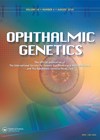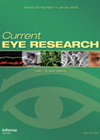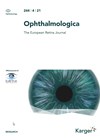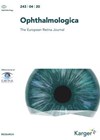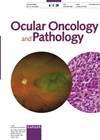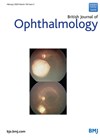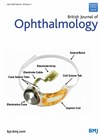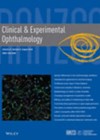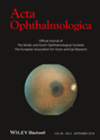
Journal Reviews
Patient reported outcomes in adolescents with inherited retinal diseases
This was a two-centre validation study of two sets of patient reported outcome measures (PROMS) for adolescents (13-17- years-old) with inherited retinal diseases. The measures were the Michigan Retinal Degeneration Questionnaire (MRDQ) and the Michigan Vision-Related Anxiety Questionnaire (MVAQ). Both...
Brolucizumab in age-related macular degeneration, HAWK Study
The aim of the study was to collect additional data on efficacy and safety of brolucizumab 6mg intended for commercialization in age-related macular degeneration (AMD) (with an increase in pH and decrease in polysorbate concentration). The HAWK Study was a...
Therapeutic options for advanced cutaneous basal (BCC) and squamous cell carcinomas (SCC)
This article discusses the use of topical and systemic therapy in the management of advanced periocular tumours. It focuses on those that have gained United States Food and Drug Administration approval; namely imiquimod, vismodegib, sonidegib, pembrolizumab and cemiplimab. Imiquimod is...
Progression of macular atrophy on long-term anti-VEGF therapy for AMD
This retrospective study evaluated the progression of macular atrophy in 53 eyes of 53 patients receiving AntiVEGF Therapy for age-related macular degeneration (nAMD), for at least six years. None of the patients had any macular atrophy (MA) at presentation. MA...
Evaluation of Optive® in ocular discomfort after anti-VEGF intravitreal injection
In this study the authors prospectively evaluated the efficacy of Optive® eye drops after in full, then abbreviation - intravitreal injection (IVT). Patients naïve to IVT were included in the study. No artificial tear treatment was prescribed after the first...
Practice patterns of uveal melanoma management with Iodine-125 brachytherapy
With the 2006 Collaborative Ocular Melanoma Study Group (COMS) study demonstrating no difference in survival outcomes for participants randomised to either iodine-125 brachytherapy or enucleation, the majority of primary uveal melanomas in the United States are now treated with brachytherapy....
Episcleral brachytherapy (EB) for retinoblastoma (RB)
This retrospective study consisted of 11 eyes treated either with Iodine (I) -125 or Ruthenium (R) -106EB with a mean apical dose of 44Gy. There were five in group B (46%), three in group C (27%) and three in group...
A prospective trial of adjuvant therapy for high-risk melanoma
Patients diagnosed with iris, ciliary body or choroidal melanoma of high-risk tumour cytogenetics (monosomy 3>/= 20% of cells), were treated with adjuvant low-dose dacarbacine (DTIC) and interferon –alpha-2b (IFNA-2b), following primary treatment (enucleation, brachytherapy or resection). DTIC was given intravenously...
Prognostic factors for visual acuity in patients with LHON after gene therapy
This retrospective study investigates prognostic factors affecting the visual acuity after a single intravitreal injection of rAAV2-ND4 gene therapy in 53 patients with Leber’s hereditary optic neuropathy (LHON) with mutation at site 11 778. Patients were reviewed one and three...
Dacryocystosclerotherapy as an alternative to dacryocystectomy
In this article, the authors evaluate the role of sclerosing agents in dacryocystosclerotherapy (DCST) and aim to see whether it is an alternative to dacryocystectomy (DCT) in a specific group of patients. Thirteen lacrimal drainage systems of 10 patients with...
Complications with porous orbital implant after enucleation in retinoblastoma patients
This is a retrospective, case control study aimed to identify risk factors associated with complications in retinoblastoma patients following primary and secondary enucleations with porous implant placements. Patients with retinoblastoma who underwent enucleation with porous orbital implant placement between January...
Mono vs. multi-therapy in IOP control
This randomised control trial studied newly diagnosed glaucoma patients given mono‐ or multi‐therapy regarding differences in initial intraocular pressure (IOP) reduction, target IOP levels reached and influence of untreated baseline IOP on IOP reduction. Patients newly diagnosed with manifest primary...

